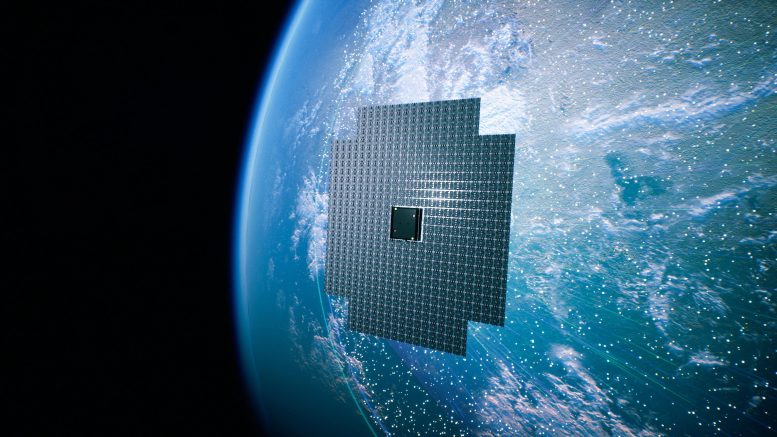
Satellite constellations, like the prototype BlueWalker 3, raise concerns among astronomers due to potential disruptions in night-sky observations and radio astronomy. Balancing global communication needs with preserving the integrity of astronomical research is crucial. Credit: AST SpaceMobile
Massive Low Earth Orbit Communications Satellites Could Disrupt Astronomy
Observations of the BlueWalker 3 prototype satellite show it is one of the brightest objects in the night sky, outshining all but the brightest stars.
Astronomers have raised concerns that without mitigation, groups of large satellites could disrupt our ability to observe the stars from Earth and perform radio astronomy.
Several companies are planning ‘constellations’ of satellites – groups of potentially hundreds of satellites that can deliver mobile or broadband services anywhere in the world.
However, these satellites need to be in ‘low-Earth’ orbit and can be relatively large, so their potential to disrupt night-sky observations is a concern.

Trails in the night sky left by BlueWalker 3 over the Observatorio Astronomico Nacional, San Pedro Martir, Mexico, observed on November 12, 2022. The breaks in the trail are caused by breaks between the exposures that were stacked to create this image. Credit: I. Plauchu-Frayn
Impact of BlueWalker 3 on Astronomy
Now, an international team of scientists led by astronomers from the IAU Centre for the Protection of the Dark and Quiet Sky from Satellite Constellation Interference (CPS, co-hosted by NSF’s NOIRLab and the SKAO) and including Imperial College London researchers, have published a paper in Nature assessing the detailed impact of the prototype BlueWalker 3 satellite on astronomy.
Dr. Dave Clements, from the Department of Physics at Imperial, said: “The night sky is a unique laboratory that allows scientists to conduct experiments that cannot be done in terrestrial laboratories. Astronomical observations have provided insights into fundamental physics and other research at the boundaries of our knowledge and changed humanity’s view of our place in the cosmos.
“The pristine night sky is also an important part of humanity’s shared cultural heritage and should be protected for society at large and for future generations.”
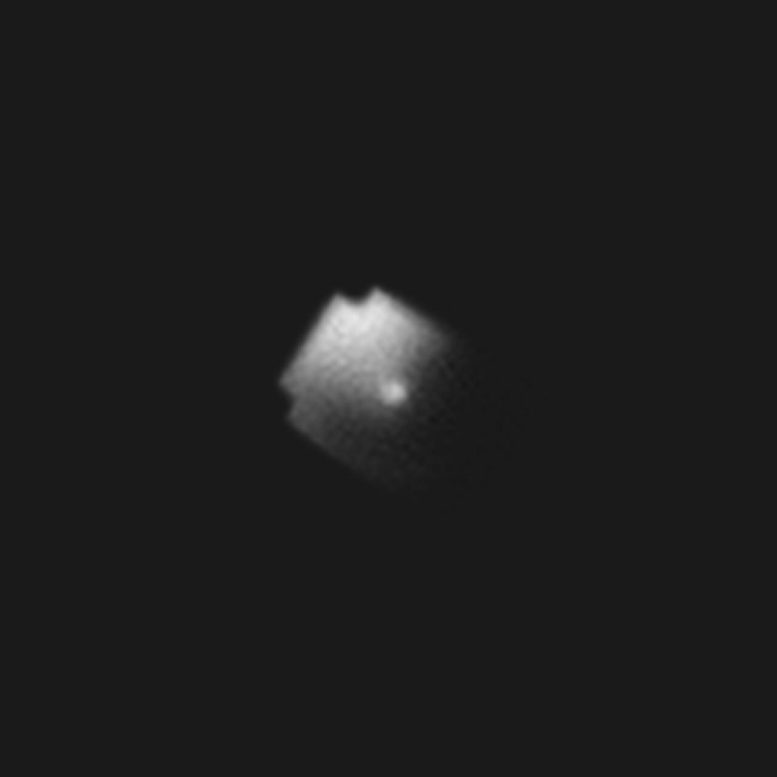
An image of the 8 meter x 8 meter BlueWalker 3 satellite as seen from the ground. Credit: M. Tzukran
Observational Data on BlueWalker 3
BlueWalker 3 was launched into low-Earth orbit on 10 September 2022 by AST SpaceMobile, as a prototype for a planned constellation of over a hundred similar satellites intended for use in mobile communications. Observations taken within weeks of the launch showed that the satellite was among the brightest objects in the sky.
However, to better understand its effects on astronomy, the CPS initiated an international observing campaign. As part of this initiative, both professional and amateur observations were contributed from across the world, from sites in Chile, the US, Mexico, Aotearoa New Zealand, the Netherlands, and Morocco.
Documenting BlueWalker 3’s brightness over a period of 130 days, the newly released data show an abrupt increase coinciding with the complete unfolding of the antenna array, which at 64 square meters is the largest commercial antenna system ever deployed into low-Earth orbit.
The BlueWalker 3 satellite captured on April 3, 2023. The optical brightness of the 8 meter x 8 meter satellite — one of the brightest objects in the night sky having reached a peak brightness of magnitude 0.4 — is exhibited here as it travels across the starry backdrop. For comparison, two fainter satellites can also be seen in the footage; Starlink-4781 (in front of BlueWalker) and Starlink-4016 (paralell and slightly behind BlueWalker in a few frames). Credit: Delft Technical University/M. Langbroek
A subset of the observations were also used to calculate the satellite’s trajectory over time. Comparing the predicted path with the observations collected, the authors were able to evaluate the accuracy of predictions and how this can change due to factors such as atmospheric drag.
Knowing the positions of the satellites is important, so astronomers can try to avoid them or at least know where they will be in the data. However, mitigating against the brightness is difficult beyond masking their position and losing data for that portion of the sky.
Radio Interference Issues
Besides visible observations, BlueWalker 3 could also interfere with radio astronomy, since it uses wavelengths close to those that radio telescopes use for observations. While some telescopes are located within designated radio quiet zones, the restrictions in place to preserve these areas currently only apply to terrestrial transmitters, so they are not necessarily protected from satellite transmission.
Dr. Mike Peel, co-lead of IAU CPS’s Sathub and researcher in the Department of Physics at Imperial, said: “BlueWalker 3 actively transmits at radio frequencies that are close to bands reserved for radio astronomy, and existing observatory protections from radio interference may not be sufficient. Further research is therefore required to develop strategies for protecting existing and upcoming telescopes from the numerous satellites planned for launch over the next decade.”
Looking Ahead
The IAU and CPS partners recognize that the new satellite constellations have an important role in improving worldwide communications. However, their interference with astronomical observations could severely hamper progress in our understanding of the cosmos. Their deployment should therefore be conducted with due consideration of their side effects and with efforts made to minimize their impact on astronomy.
Observations of BlueWalker 3 will continue, with plans by astronomers to observe its thermal emission later this year. Astronomers will continue to discuss this topic at the upcoming IAU Symposium: Astronomy and Satellite Constellations: Pathways Forward in October.
Reference: “The high optical brightness of the BlueWalker 3 satellite” by Sangeetha Nandakumar, Siegfried Eggl, Jeremy Tregloan-Reed, Christian Adam, Jasmine Anderson-Baldwin, Michele T. Bannister, Adam Battle, Zouhair Benkhaldoun, Tanner Campbell, J. P. Colque, Guillermo Damke, Ilse Plauchu Frayn, Mourad Ghachoui, Pedro F. Guillen, Aziz Ettahar Kaeouach, Harrison R. Krantz, Marco Langbroek, Nicholas Rattenbury, Vishnu Reddy, Ryan Ridden-Harper, Brad Young, Eduardo Unda-Sanzana, Alan M. Watson, Constance E. Walker, John C. Barentine, Piero Benvenuti, Federico Di Vruno, Mike W. Peel, Meredith L. Rawls, Cees Bassa, Catalina Flores-Quintana, Pablo García, Sam Kim, Penélope Longa-Peña, Edgar Ortiz, Ángel Otarola, María Romero-Colmenares, Pedro Sanhueza, Giorgio Siringo and Mario Soto, 2 October 2023, Nature.
DOI: 10.1038/s41586-023-06672-7

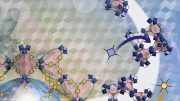


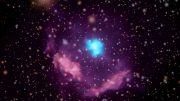
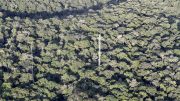


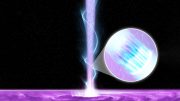
Be the first to comment on "Manmade Menace? Massive Satellite Outshines All but the Brightest Stars"